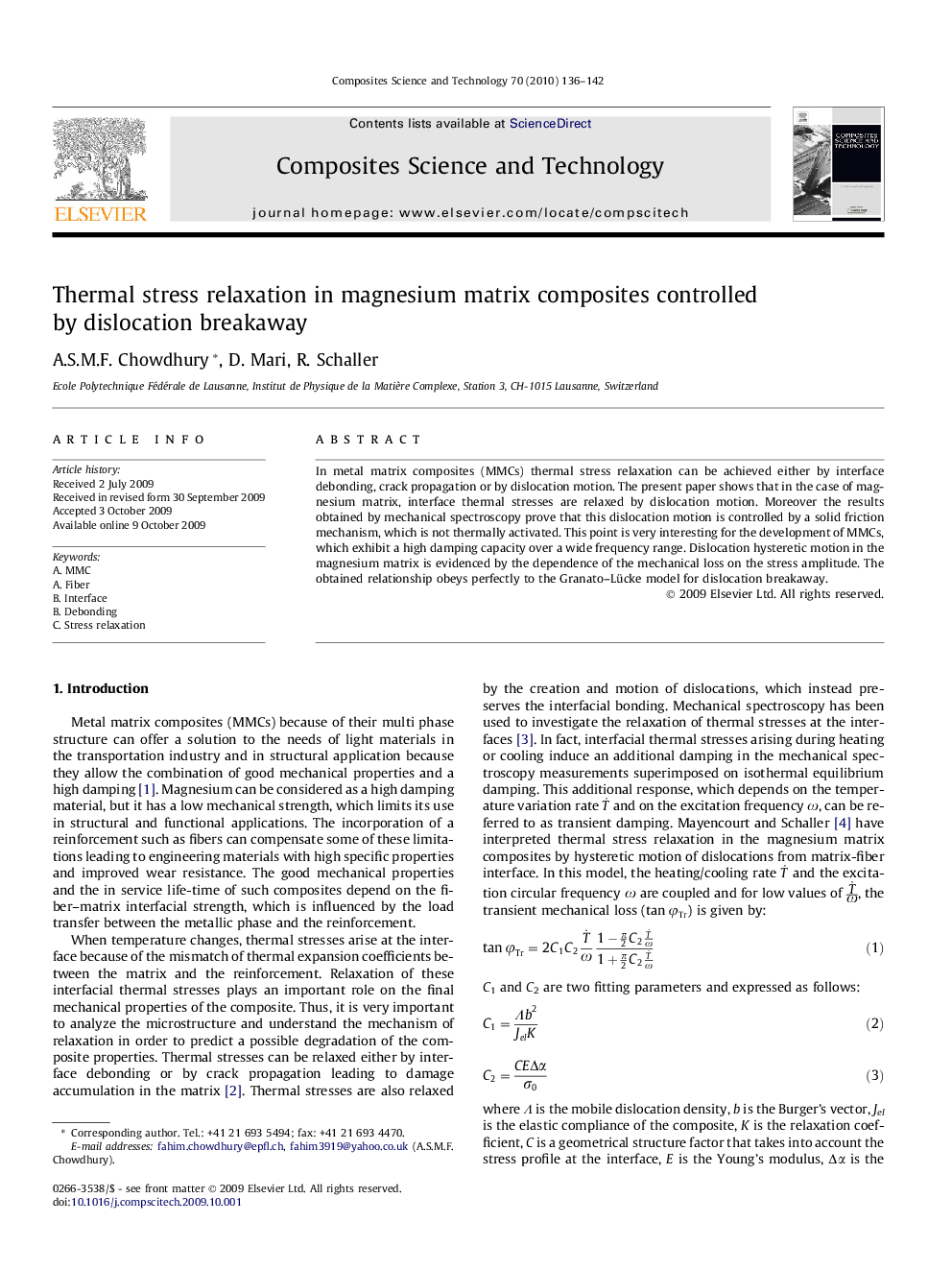| Article ID | Journal | Published Year | Pages | File Type |
|---|---|---|---|---|
| 821310 | Composites Science and Technology | 2010 | 7 Pages |
In metal matrix composites (MMCs) thermal stress relaxation can be achieved either by interface debonding, crack propagation or by dislocation motion. The present paper shows that in the case of magnesium matrix, interface thermal stresses are relaxed by dislocation motion. Moreover the results obtained by mechanical spectroscopy prove that this dislocation motion is controlled by a solid friction mechanism, which is not thermally activated. This point is very interesting for the development of MMCs, which exhibit a high damping capacity over a wide frequency range. Dislocation hysteretic motion in the magnesium matrix is evidenced by the dependence of the mechanical loss on the stress amplitude. The obtained relationship obeys perfectly to the Granato–Lücke model for dislocation breakaway.
